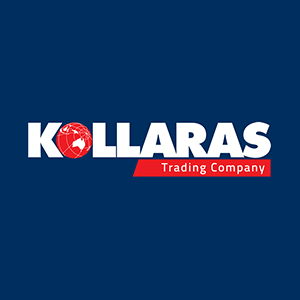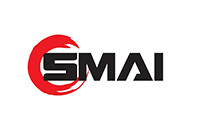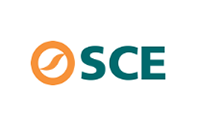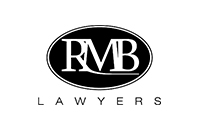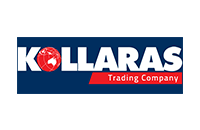Your brand. Your innovation.
Do you own it?
Find Out
Trade marks
What is a Trade mark and why do I need one?
Your trade marks include your business’s name, product names and whatever you consider to be its “brand”. It also includes the logos that you use to advertise, promote and sell your products. It is how your customers tell others about you. It encapsulates the values of your business and is the thing that brings customers back to your business – knowing that the products they bought under your trade mark is the one they are looking for.
Do you own your Brands?
The question for every business is – Does the business own its trade marks?
If you have not registered your trade mark through IP Australia then the answer is, “No”.
Registering your trade marks at IP Australia is the only way that you can confidently and formally own your trade marks.
Many businesses will offer their business name, company name and domain name registrations as proof of ownership of their trade marks. However, none of these registrations give your business the legal right to stop others from using the same or similar brand for the same or similar products or confer ownership of the trade mark. Only trade mark registration does this.
How do I get a Trade Mark?
To get your trade marks registered, you need to apply for registration at IP Australia, the Australian government body that administers the Trade Marks Act 1995 (Cth) and maintains the Trade Marks Register.
At Marshall Marks, we specialise in trade mark registration to get your brands registered and protected.
Call us today to get your trade marks REGISTERED.
Click on the links below for more details and information on how we can help you.
Want advice fast?
Call us on 0499 222 028
If you have a new business or are re-branding an existing business, or you simply want the peace of mind that you own the brand you have been using for a while, a clearance search is recommended as the first step.
To attempt to clear your brand for use, we will conduct searches of the trade marks register and other registers to see if there is any use of your brand or a similar brand by other businesses for the same or related products to those that you intend to sell under the brand.
Call us to CLEAR your brand today.
Read MoreTo own a trade mark you need to apply to register it. Applications for trade mark registration are now done electronically through the IP Australia website. However, before you apply to register your brand as a trade mark you will need to identify what your trade mark is and the goods and/or services that you will seek to register it for.
These might sound like simple tasks; however, there are a number of matters that you need to consider to ensure that your resulting trade mark registration is fit for purpose and to make the application process as streamlined as possible.
Call us today to REGISTER your brand as a trade mark.
Read MoreA trade mark registration in Australia will only establish your business’s rights in that trade mark in Australia. It cannot be used to prevent the use of the same or similar trade mark in any other country. To obtain trade mark rights in other countries it is necessary to apply to register your brand as a trade mark in those countries via the Trade Mark Office in each country.
A “shot-gun” approach to trade mark registration overseas where you simply register in as many countries as possible will often be unnecessary and will be extremely expensive. Accordingly, it is best to register your trade mark in those countries that you have a current or foreseeable interest in trading in.
Call us today to start your INTERNATIONAL TRADE MARK portfolio
Read MoreOnce the Trade Marks Office (IP Australia) has approved a trade mark for registration it will advertise it in the Official Journal of Trade Marks. Any person can oppose the registration of that trade mark by filing a Notice of Intention to Oppose. Such Notice must be filed within two (2) months of the date on which it was advertised in the Official Journal.
If no Notices are filed, the trade mark will proceed to registration upon payment of the registration fees. Once the trade mark is registered, opposition to it cannot be lodged with the Trade Marks Office, except in certain limited circumstances. If a party wishes to oppose the registration of a trade mark after it has proceeded to registration, they will need to do so by application to the Federal Court, which will be very costly.
Call us to assist with your trade mark OPPOSITION today.
Read MoreSometimes a trade mark may go unused for a period of time or may not have been initially applied for with the intention that the applicant would actually use it in good faith. In such instances, action can be taken at the Trade Marks Office (instead of the Federal Court) to have a trade mark registration removed from the trade marks register. This is referred to as a Non-use Action.
A successful non-use action will result in the trade mark registration being struck from the trade marks register, possibly leaving the registered owner without any rights in the trade mark.
Call us to assist with your NON-USE ACTION today.
Read MoreRegistered trade marks need to be renewed every ten (10) years from the date on which they were original filed. The effect of renewing your registered trade mark is that it will remain in force for another ten (10) years.
Ten years is a long time in business, and we find that many trade marks that are coming up for renewal need a good dust off and revisit, so we do not simply seek renewal of a trade mark without first confirming that the registration is still fit for purpose.
Unlike other attorneys, which charge a fee per class, our renewals are a fixed price of $660.00 (inc GST) plus IP Australia’s fees at a rate of $300.00 per class.
Call us today of to RENEW your registered trade marks.
Read MoreA registered trade mark is an item of personal property of the registered owner. As such the registered owner can transfer the ownership of a registered trade mark to another person or entity. This person or entity is referred to as the Assignee. A trade mark assignment agreement is used to transfer the ownership of a registered trade mark to the Assignee.
Once the terms of the trade mark assignment agreement have been agreed between the registered owner and the Assignee, the change of ownership needs to be recorded on the Trade Marks Register.
Unregistered trade marks can also be transferred; however the agreement transferring unregistered trade marks is often more complex.
Call us today if you are SELLING or TRANSFERRING any of your trade marks (registered or unregistered).
Read MoreA trade mark licence is where the owner of a trade mark (registered or unregistered) permits another person to use that trade mark in relation to the goods and/or services for which it is registered or associated with.
The need for a trade mark licence can arise in many situations and the terms of such licences are almost entirely at the discretion of the parties to such licence agreements. Such licences may also generate the obligation of the user of the trade mark (the licensee) to pay money (usually referred to as royalties) to the trade mark owner (also called the licensor).
Call us today for assistance with trade mark LICENSING.
Read MoreRegistration of a trade mark gives its owner the right to take legal action against someone else who is using the same or similar trade mark in relation to the same or similar goods as those for which the trade mark is registered. Apart from conferring “ownership” of a trade mark on the registered owner, this is the main purpose and characteristic of a trade mark registration.
However, it is for the owner of a trade mark to “police” its trade mark rights and threaten legal action and where necessary take legal action to prevent someone else using a conflicting trade mark. The Trade Marks Office (IP Australia) will not do this for you, nor will they take action to prevent any infringements of your trade mark, once they come to light.
Call us for assistance with INFRINGEMENT today.
Read MoreWhether your business has one trade mark registration or hundreds, it or they need to be properly maintained. This can be as basic as making sure the name and address details of your registrations are correctly recorded on the Trade Marks Register, ensuring changes of ownership are recorded and ensuring renewals are processed on time.
If you are in the process of applying to register trade marks, many more deadlines will apply, including deadlines to respond to examination reports, deadlines to pay registration fees and in some instances, deadlines to pay extension fees, to keep a case pending.
It is so easy for such matters to become lost in all the other things your business is doing, and in addition, the correspondence from the Trade Marks Office is often complex and difficult to understand and deadlines are not always clearly stated.
Call us to MANAGE your trade mark portfolio today.
Read MoreNot sure where to start?
We're here to make it easy. Call or email us today.


